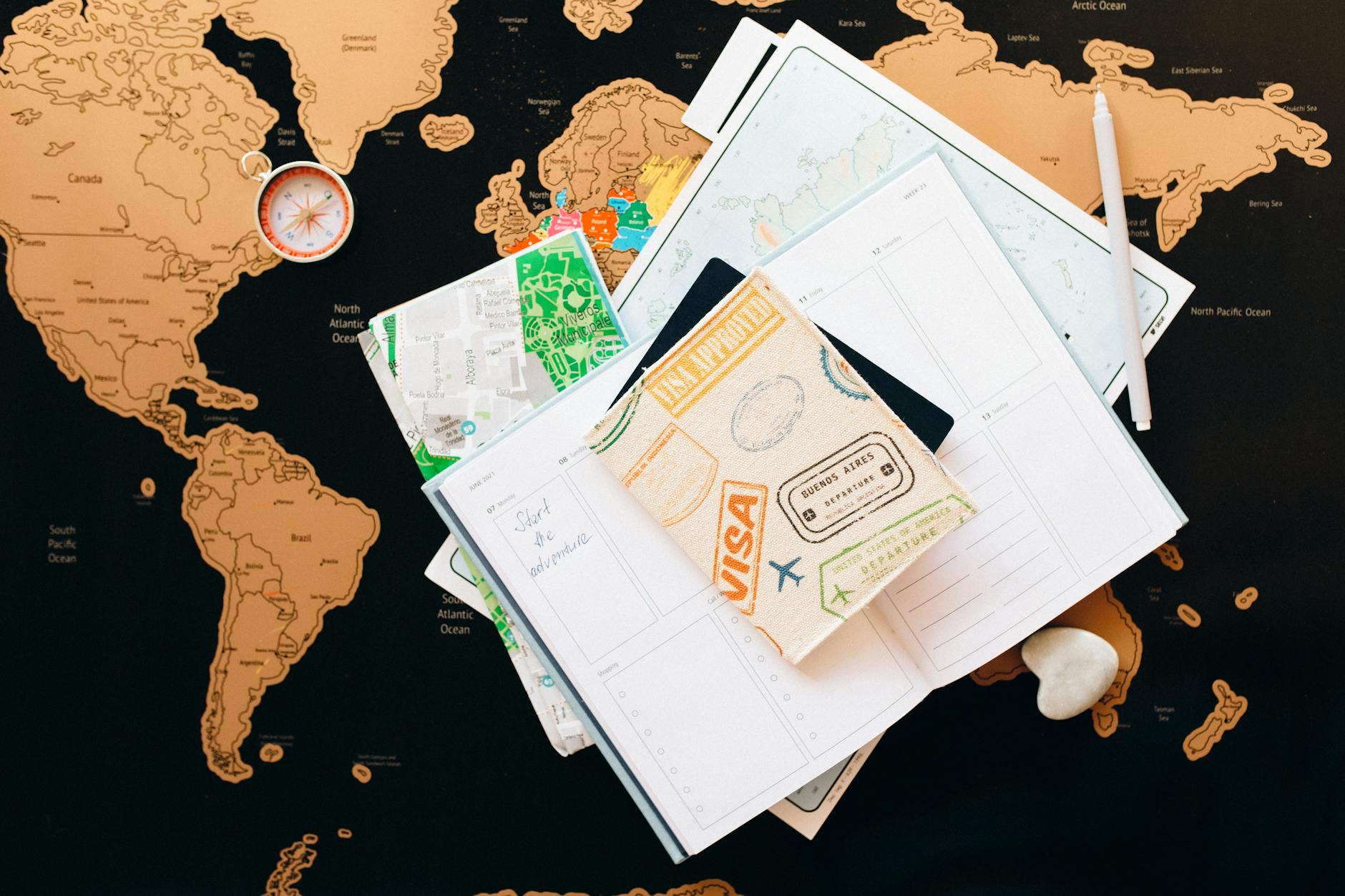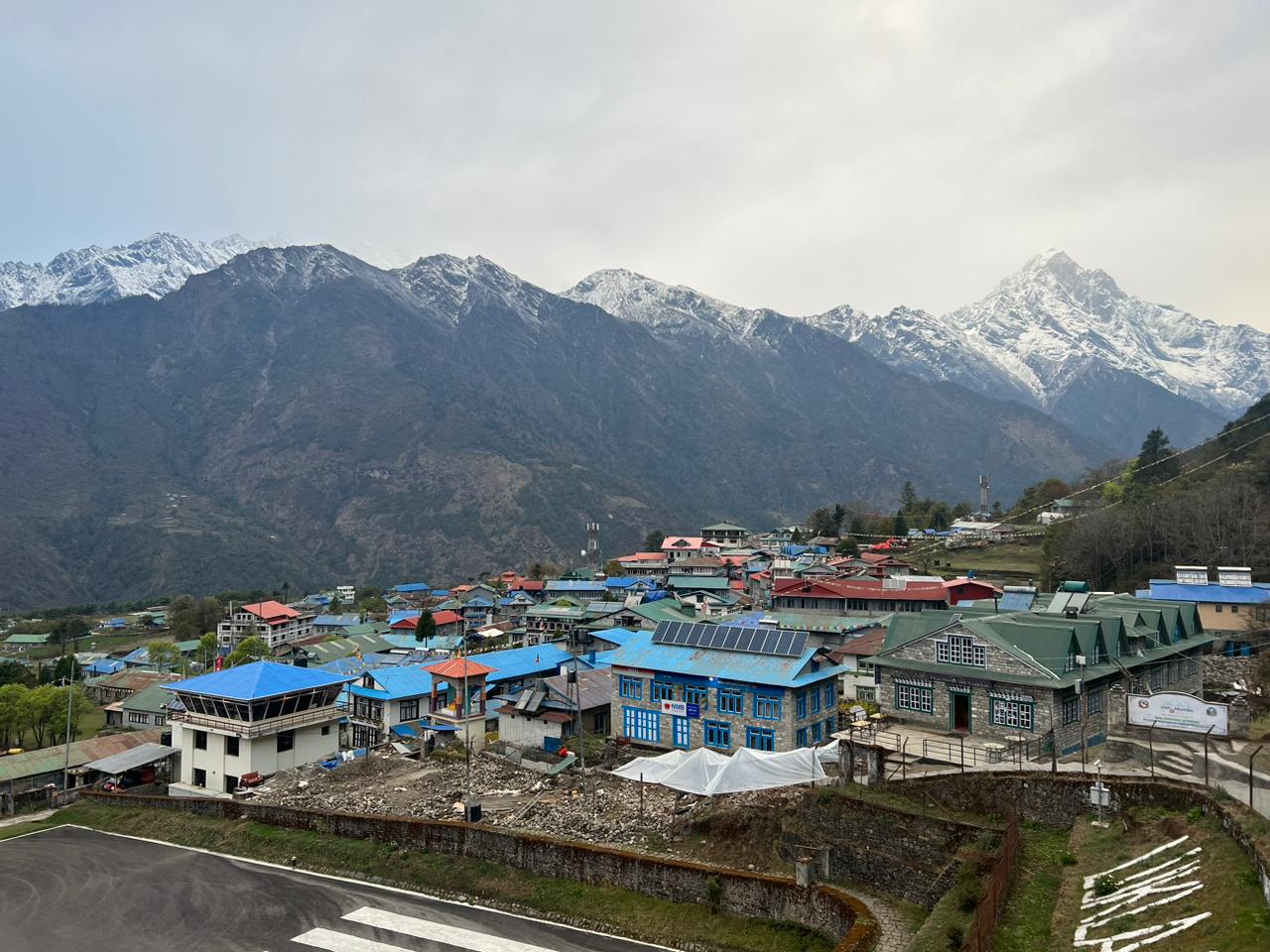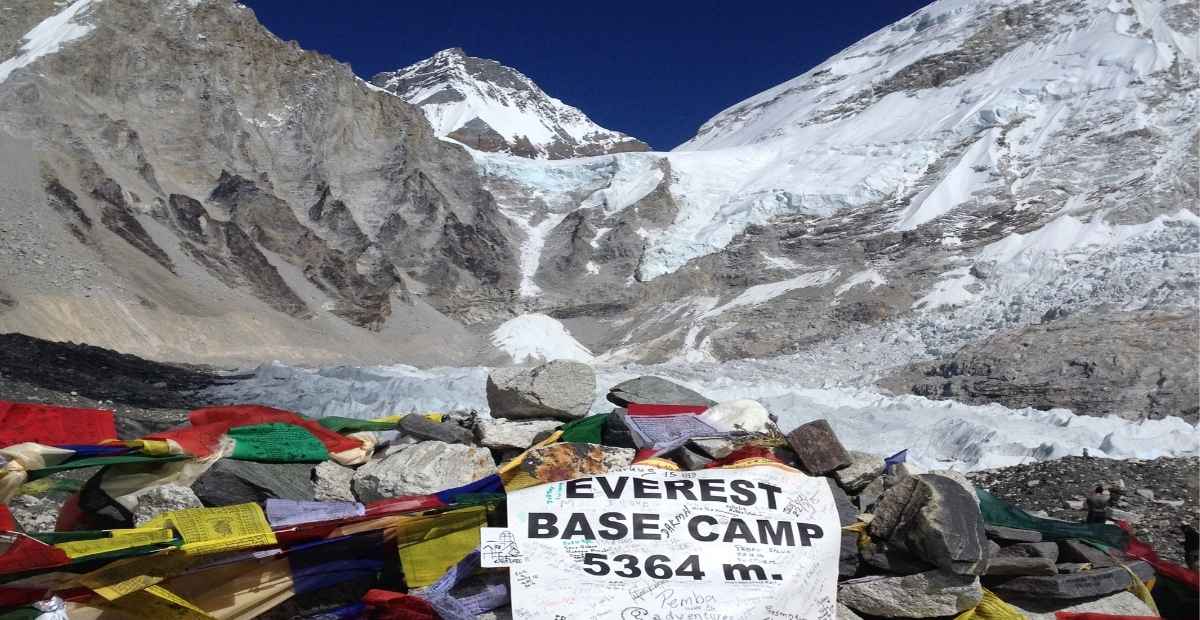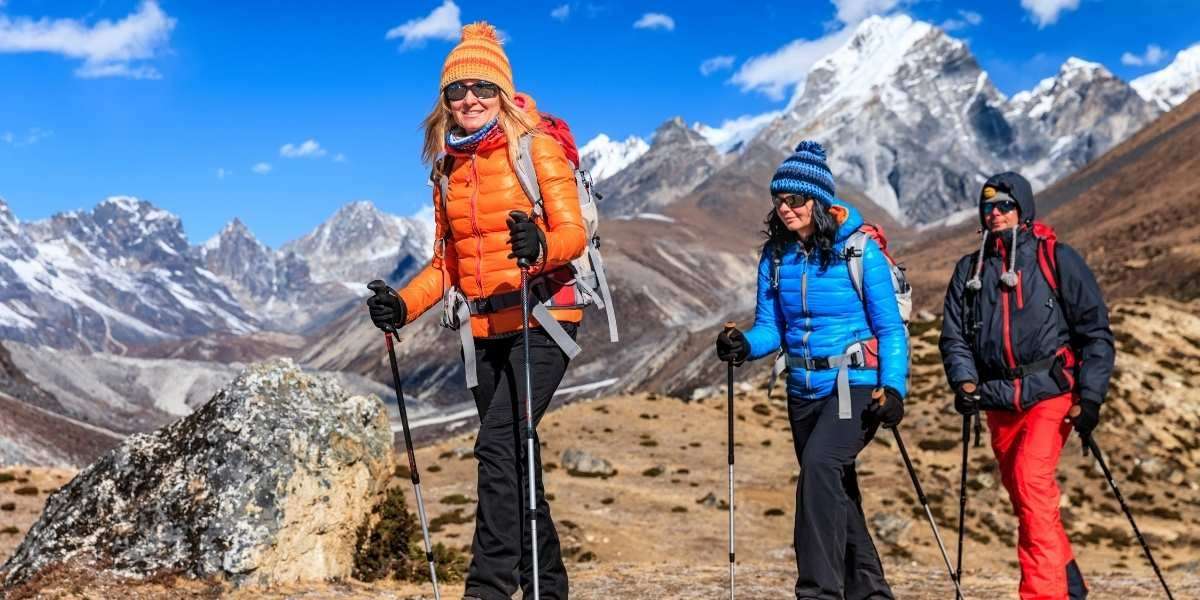Tabel Of Contents

Have you ever dreamed of standing at the foot of the world's highest peak? The Everest Base Camp Trek is not just a journey; it's an adventure of a lifetime that beckons thousands of trekkers each year. But before you lace up your hiking boots, you might be wondering: How much does it cost? What's the route like? How long will it take? 🏔️💰🗺️
These questions can be as daunting as the trek itself. Many aspiring trekkers find themselves lost in a maze of conflicting information, unsure of how to plan for such an epic adventure. The good news? We've got you covered. In this comprehensive guide, we'll break down everything you need to know about the Everest Base Camp Trek – from costs and maps to distances and timeframes.
So, are you ready to embark on the journey of a lifetime? Let's dive into the nitty-gritty details of planning your Everest Base Camp Trek, starting with understanding what this legendary adventure entails.
Understanding the Everest Base Camp Trek

Overview of the iconic journey
The Everest Base Camp Trek is a legendary adventure that takes trekkers through the heart of Nepal's Khumbu region, culminating at the foot of the world's highest peak. This iconic journey offers breathtaking Himalayan vistas, rich Sherpa culture, and the thrill of walking in the footsteps of mountaineering legends.
Key features of the trek include:
- Duration: Typically 12-14 days
- Altitude: Reaching up to 5,364 meters (17,598 feet) at Everest Base Camp
- Terrain: Varied, from lush forests to rocky moraines
- Accommodation: Tea houses and lodges along the route
| Aspect | Description |
|---|---|
| Physical Challenge | Moderate to high, requiring good fitness |
| Cultural Experience | Immersion in Sherpa villages and monasteries |
| Scenery | Panoramic mountain views, glaciers, and alpine landscapes |
| Highlight | Standing at the base of Mount Everest |
Key attractions along the route
The Everest Base Camp Trek is dotted with numerous captivating sights and experiences:
- Namche Bazaar: The bustling Sherpa capital and gateway to the Everest region.
- Tengboche Monastery: The spiritual center of the Khumbu, offering stunning views of Everest.
- Kala Patthar: A viewpoint providing the closest and most dramatic views of Everest.
- Sagarmatha National Park: A UNESCO World Heritage site teeming with unique flora and fauna.
- Khumbu Glacier: One of the longest glaciers in the Himalayas.
- Sherpa villages: Opportunities to experience authentic mountain culture and hospitality.
Best seasons for trekking
The trek can be undertaken year-round, but certain seasons offer optimal conditions:
- Spring (March to May): Moderate temperatures, clear skies, and blooming rhododendrons.
- Autumn (September to November): Stable weather, clear mountain views, and festive atmosphere.
- Winter (December to February): Quieter trails, crisp air, but colder temperatures.
- Summer/Monsoon (June to August): Lush landscapes, but potential rain and limited visibility.
Choosing the right season depends on personal preferences for weather, crowd levels, and scenic beauty. With proper preparation, each season provides a unique trekking experience in this awe-inspiring Himalayan landscape.
Detailed Cost Breakdown

Permits and fees
To embark on the Everest Base Camp Trek, you'll need to secure various permits and pay necessary fees. Here's a breakdown:
- Sagarmatha National Park Entry Permit: $30
- Khumbu Pasang Lhamu Rural Municipality Entrance Fee: $20
- TIMS Card (Trekkers' Information Management System): $10
These permits are essential for legal entry into the trekking region and contribute to conservation efforts.
Transportation expenses
Transportation costs vary depending on your chosen route:
| Mode of Transport | Cost Range (USD) |
|---|---|
| Flight to Lukla | $180 - $220 |
| Jeep to Jiri | $80 - $100 |
| Bus to Jiri | $10 - $15 |
Flying to Lukla is the most popular and time-efficient option, while taking a jeep or bus to Jiri offers a more budget-friendly alternative with additional trekking days.
Accommodation costs
Teahouses along the trek provide basic accommodation:
- Lower elevations: $3 - $5 per night
- Higher elevations: $10 - $15 per night
Prices increase with altitude due to the difficulty of transporting supplies.
Food and drink budget
Daily food expenses typically range from $20 to $30, depending on your choices:
- Basic meals: $5 - $8
- Hot drinks: $2 - $4
- Bottled water: $1 - $3 per liter (prices increase with altitude)
It's advisable to budget extra for snacks and altitude sickness medication.
Guide and porter fees
Hiring a guide and porter can significantly enhance your trekking experience:
- Guide: $25 - $30 per day
- Porter: $20 - $25 per day
These rates usually include their food and accommodation. Remember to factor in tips, typically 10-15% of the total fee.
Now that we've covered the detailed cost breakdown, let's explore the maps and routes that will guide you through this incredible journey.
Navigating the Trek: Maps and Routes

Popular trekking routes
The Everest Base Camp Trek offers several routes, each with its unique charm:
- Classic Route: Lukla to EBC via Namche Bazaar
- Gokyo Lakes Route: Includes the stunning Gokyo Lakes
- Three Passes Trek: Challenging route crossing Kongma La, Cho La, and Renjo La passes
| Route | Duration | Difficulty | Highlights |
|---|---|---|---|
| Classic | 12-14 days | Moderate | Namche Bazaar, Tengboche Monastery |
| Gokyo Lakes | 14-16 days | Moderate-Hard | Turquoise lakes, Gokyo Ri viewpoint |
| Three Passes | 18-20 days | Hard | Spectacular views, less crowded |
Key landmarks and checkpoints
Trekkers will encounter several important landmarks:
- Lukla Airport (2,860m): Starting point
- Namche Bazaar (3,440m): Acclimatization stop
- Tengboche Monastery (3,867m): Spiritual center
- Dingboche (4,410m): Another acclimatization point
- Gorak Shep (5,164m): Last settlement before EBC
- Everest Base Camp (5,364m): Final destination
Altitude considerations
As you ascend, be aware of altitude-related risks:
- Gradual ascent: Climb no more than 300-500m per day
- Rest days: Include acclimatization days in Namche Bazaar and Dingboche
- Hydration: Drink plenty of water to combat altitude sickness
- Symptoms: Watch for headaches, nausea, and dizziness
Navigation tools and resources
To ensure a safe trek, utilize these navigation aids:
- Physical maps: Detailed topographic maps of the region
- GPS devices: For accurate location tracking
- Smartphone apps: Offline mapping apps like Maps.me or Gaia GPS
- Local guides: Experienced Sherpas familiar with the terrain
Remember to always trek with a partner and inform others of your plans. With proper planning and navigation, your Everest Base Camp trek will be an unforgettable adventure.
Trek Distance and Difficulty

Total distance covered
The Everest Base Camp Trek covers a total distance of approximately 130 kilometers (80 miles) round trip. This journey takes you through some of the most breathtaking landscapes in the Himalayas, starting from Lukla and culminating at the base of the world's highest peak.
Daily trekking distances
Daily trekking distances vary depending on the terrain and acclimatization needs. Here's a breakdown of average distances:
| Day | Route | Distance (km) |
|---|---|---|
| 1 | Lukla to Phakding | 8-9 |
| 2 | Phakding to Namche Bazaar | 10-12 |
| 3 | Acclimatization day | 0-5 |
| 4 | Namche to Tengboche | 9-10 |
| 5 | Tengboche to Dingboche | 11-12 |
| 6 | Acclimatization day | 0-5 |
| 7 | Dingboche to Lobuche | 8-9 |
| 8 | Lobuche to EBC and back to Gorak Shep | 15-16 |
Terrain challenges
The trek presents various terrain challenges:
- Rocky paths
- Steep ascents and descents
- High-altitude passes
- Icy sections (depending on the season)
- Suspension bridges
Fitness requirements
To tackle the Everest Base Camp Trek, you should:
- Have good cardiovascular endurance
- Be able to walk 5-7 hours daily
- Train for uphill climbing
- Practice carrying a daypack (4-5 kg)
- Prepare for high-altitude conditions
Now that you understand the distance and difficulty of the trek, it's crucial to plan your itinerary carefully to ensure a safe and enjoyable experience.
Timeframe and Itinerary Planning

Typical duration of the trek
The Everest Base Camp trek typically takes between 12 to 16 days to complete. This timeframe allows for proper acclimatization and a comfortable pace. Here's a breakdown of the average duration:
| Trek Component | Duration (Days) |
|---|---|
| Trekking Days | 8-10 |
| Acclimatization | 2-3 |
| Travel Days | 2-3 |
Recommended acclimatization days
Proper acclimatization is crucial for a safe and enjoyable trek. Most itineraries include 2-3 dedicated acclimatization days, typically at:
- Namche Bazaar (3,440m)
- Dingboche (4,410m)
During these days, trekkers engage in short hikes to higher altitudes before descending to sleep, following the "climb high, sleep low" principle.
Flexible vs. fixed itineraries
- Flexible itineraries:
- Allow for personal pace adjustments
- Accommodate unexpected weather conditions
- Provide room for extended exploration
- Fixed itineraries:
- Offer structured planning
- Ensure efficient use of time
- Often more budget-friendly
Factors affecting trek duration
Several factors can influence the length of your Everest Base Camp trek:
- Fitness level
- Acclimatization needs
- Weather conditions
- Side trips (e.g., Kala Patthar)
- Transportation choices (flying vs. driving to Lukla)
Considering these factors when planning your itinerary will help ensure a successful and enjoyable trek to Everest Base Camp. Next, we'll explore essential gear and equipment needed for this epic adventure.

The Everest Base Camp Trek offers an unforgettable adventure for those seeking to experience the majesty of the Himalayas. From understanding the trek's basics to breaking down costs, navigating routes, and planning your itinerary, this guide equips you with essential knowledge for your journey. Remember that proper preparation, including physical conditioning and acclimatization, is crucial for a successful and enjoyable trek.
As you embark on this incredible expedition, embrace the challenges and rewards that await you. The Everest Base Camp Trek is not just about reaching a destination; it's about immersing yourself in the rich culture, breathtaking landscapes, and personal growth that come with such an epic adventure. Start planning your trek today and prepare for an experience that will stay with you for a lifetime.



